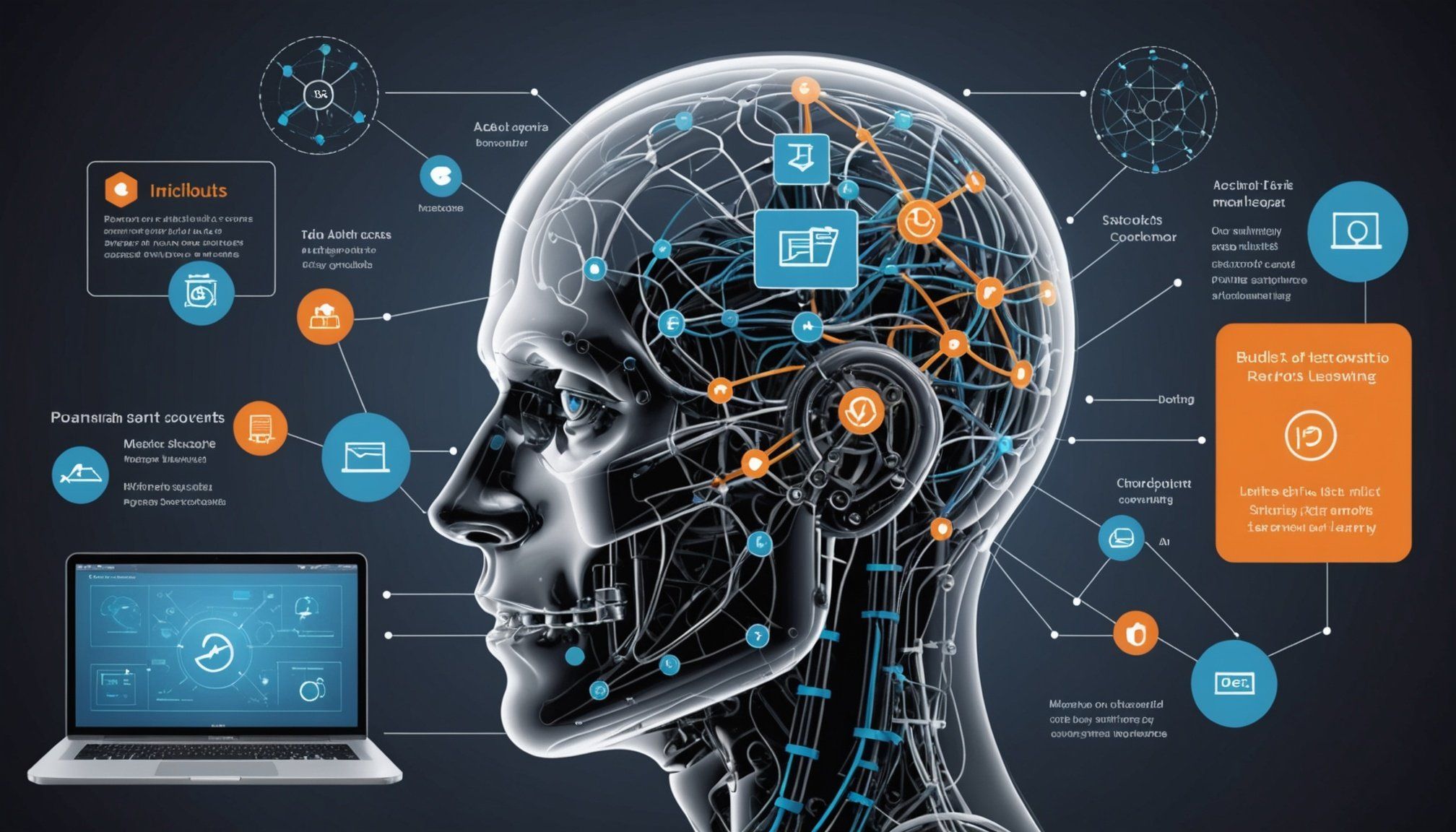Understanding Machine Learning Workflows
In the realm of machine learning, the workflow is the backbone that enables seamless transitions from raw data to actionable insights. A standard machine learning workflow consists of integral components, each playing a critical role. At the heart of this workflow is the data pipeline, responsible for data ingestion, cleaning, and transformation. Reliable and efficient data handling ensures that downstream processes, such as model training and evaluation, operate without hitches.
Data preparation and processing stand as foundational elements of any workflow. They ensure data is in a form that algorithms can easily interpret and learn from. This involves handling missing values, normalising data ranges, and encoding categorical variables, crucial for accurate model training.
Also read : Transforming Biometric Security: Leveraging AI for Enhanced Accuracy and Safety
A central aspect of this workflow is the role of models. They act as the decision-makers, tasked with extracting patterns and generating predictions. The process involves selecting an appropriate model type, training it on a dataset, and fine-tuning hyperparameters to achieve optimal performance.
By understanding the intricacies of each workflow component, practitioners can better orchestrate their machine learning projects, ensuring that each part aligns with their overarching goals. An effective machine learning workflow ultimately translates into insightful, data-driven decisions that power innovation and discovery.
Also read : Unleashing the power of ai detectors for authentic writing
Key Strategies for Data Management
Ensuring high data quality and integrity is fundamental for making informed predictions and building robust machine learning models. Without this, models may generate inaccurate outcomes, potentially leading to misguided decisions. Implementing data governance best practices is essential, as it provides a framework for determining how data is managed, used, and preserved. This involves setting clear rules and responsibilities for data handling, thereby minimising risks and maximising the value derived from data.
Efficient strategies for data collection and storage play a crucial role in maintaining order and accessibility. Organising data repositories to support scalability and easy retrieval allows data scientists to focus on analysis without getting bogged down in retrieval issues. This also includes considering the infrastructure needed to handle large datasets efficiently, ensuring that data is available as needed without compromising quality.
For optimal results in machine learning, data needs to be not only accurate and well-governed but also relevant and timely. Therefore, continuous evaluation of data processes is vital to adapt to evolving business needs and technological advancements. Observing these strategies equips stakeholders with the necessary insights to innovate and refine their machine learning workflows continuously.
Enhancing Security in Machine Learning
In the intricate world of machine learning security, vulnerabilities are inevitable, making effective threat modeling indispensable. Begin by identifying common threats such as adversarial attacks, which manipulate input data, and model inversion, where attackers deduce sensitive training data from the model. Mitigating these risks involves deploying robust security protocols, such as encryption and secure authentication processes, during data processing and model utilisation.
The backbone of secure machine learning workflows is the implementation of privacy measures. Data anonymisation and differential privacy techniques protect personal information while maintaining model accuracy. This balance is vital, as it ensures compliance with privacy regulations without compromising the analysis’ integrity or results.
Moreover, secure data transmission and storage techniques are paramount in safeguarding machine learning infrastructures. Encrypting data in transit prevents unauthorised access, whereas secure storage solutions, like cloud-based security platforms, keep sensitive information protected. Harnessing these strategies not only fortifies data integrity but also establishes a solid foundation for confidently deploying machine learning solutions in potentially vulnerable environments.
In summary, by integrating comprehensive security practices into machine learning workflows, organizations can mitigate risks, embrace innovation, and capitalise on the opportunities these advanced technologies offer.
Model Deployment Best Practices
Deploying a machine learning model successfully requires strategic execution and robust deployment strategies. Techniques such as A/B testing and canary releases are pivotal in assessing model performance under real-world conditions. A/B testing involves comparing two versions of a model to determine performance differences, while canary releases gradually roll out changes to a subset, mitigating risks associated with full-scale deployment.
The integration of Continuous Integration/Continuous Deployment (CI/CD) practices is crucial in maintaining the seamless operation of machine learning models. CI/CD ensures that changes are systematically tested and deployed, streamlining updates and reducing manual errors, thus enhancing the efficiency and reliability of the system.
Post-deployment, vigilant performance monitoring is imperative to ensure ongoing model accuracy and reliability. This involves tracking metrics such as prediction accuracy, processing speed, and system resource utilisation. Consistent monitoring allows for the timely identification and resolution of potential issues, securing optimal performance over the model’s lifecycle.
By focusing on these best practices, organisations can confidently manage their model deployments, ensuring that their machine learning solutions remain robust, effective, and aligned with evolving operational requirements. Embracing these approaches creates a solid foundation for sustainable and scalable machine learning implementation.
Monitoring and Maintenance of Machine Learning Models
Once machine learning models are deployed, monitoring and maintenance become crucial components in ensuring their efficacy over time. Keeping a close eye on performance metrics, such as prediction accuracy and processing speed, helps identify when a model’s accuracy begins to deteriorate. Other key metrics can include data drift and model bias, as these indicate deviations between expected and actual performance.
Establishing a robust monitoring framework allows for ongoing evaluation of the models. This framework should continuously collect relevant data and alert stakeholders to any potential discrepancies. Automated systems can track these changes and provide notifications, enabling quick responses to unforeseen challenges.
Effective monitoring also paves the way for strategic model retraining and updates. Retraining may be necessary when significant changes in input data patterns are detected, or when models consistently exhibit reduced performance. Consistent evaluation schedules should be set to determine if model updates or complete retrainings are required to maintain optimal performance.
By integrating these monitoring and maintenance strategies, organisations ensure their machine learning models remain accurate, reliable, and capable of adapting to evolving conditions, thereby extending the models’ operational life and achieving sustained success in data-driven decision-making.
Common Pitfalls in Machine Learning Workflows
Machine learning pitfalls often emerge due to oversight or the lack of a comprehensive strategy. One prevalent issue is improper data handling, leading to inaccurate results. Without rigorous data review and correction protocols, models are prone to learn from flawed datasets, which can significantly impact outcomes.
Navigating project challenges demands proactive risk management. Challenges such as inadequate data governance and insufficient infrastructure can hinder progress. Missing an end-to-end workflow plan often disorients teams, resulting in misaligned goals and spiralled out resource investments.
Effective risk management strategies are critical. Teams should allocate resources to conduct thorough initial assessments and regular evaluations of their workflow components. Emphasis should be placed on agility, allowing for quick adjustments when unforeseen circumstances arise. Creating a culture of continuous improvement by incorporating feedback and adapting to insights is also essential.
Consider reviewing past project failures to glean invaluable lessons. These case studies encapsulate common hurdles like scalability issues or integration problems with data pipelines, illustrating the importance of a well-defined workflow. By learning from such examples, teams can anticipate potential obstacles and develop more robust solutions to avoid similar outcomes in future projects.
Tools and Resources for Building Secure Workflows
In the rapidly evolving domain of machine learning, leveraging the right tools and resources is crucial for establishing secure and efficient workflows. This ensures the integrity of processes from data collection through to model deployment.
Security tools play a significant role, especially in safeguarding sensitive data and maintaining compliance with privacy regulations. Tools like TensorFlow Privacy and IBM’s Adversarial Robustness Toolbox provide developers with frameworks to enhance model security against threats such as adversarial attacks and data leaks. These tools are designed to integrate seamlessly into existing workflow components, offering heightened protection without disrupting functionality.
For efficient data management and model deployment, platforms such as Apache Airflow for automated pipeline management and Kubernetes for container orchestration are highly recommended. They ensure scalability, efficient resource allocation, and robust monitoring, integral to maintaining workflow security.
Additionally, engaging with resource guides and platforms like Coursera or edX offers practitioners opportunities for continuous learning and skill enhancement. These platforms provide accessible courses on emerging trends and best practices in machine learning, equipping professionals with the knowledge to refine their workflows continually.
By using appropriate tools and actively pursuing educational resources, organisations can secure, optimise, and future-proof their machine learning workflows.











